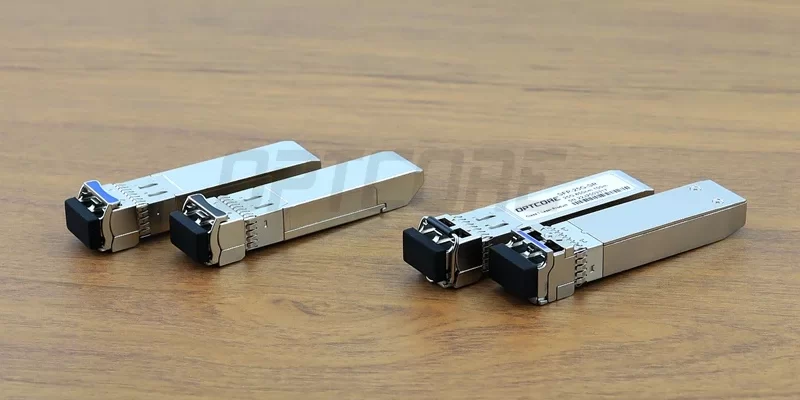
SFP28 vs SFP+ Transceiver, What is the Difference?
With the introduction of new technologies and economic drivers, many companies’ data center landscapes are moving toward higher speeds, scalability, and performance levels. As we all know, a broader technology shift requires more networks and bandwidth. Therefore, more and more organizations are upgrading from 10GbE to 25GbE technology. The SFP+ and SFP28 are the most popular correlated form factor.
This article will focus on the difference between the SFP+ transceiver and SFP28 transceiver. By exploring the crucial differences and core features, you will learn how to choose and identify them.
Keep reading to learn more about SFP+ vs. SFP28.
10GbE Basics
10 Gigabit Ethernet (10 GbE, 10 GE, or 10 GigE) is a disruptive telecommunications technology that transmits packets over Ethernet at a rate of 10 billion bits per second. This innovation extends the reach of traditional and familiar Ethernet in local area networks (LANs) to a broader range of network applications, including high-speed storage area networks (SANs), wide area networks (WANs), and metropolitan area networks (MANs).
10G Ethernet provides a more efficient and cheaper way to move data over network backbone connections. The IEEE 802.3ae standard allows up to 100 kilometers between physical locations on a single mode fiber. Both single-mode and multimode fiber systems can use for 10 GbE applications.
The 10 GbE standard is fully interoperable with existing Ethernet protocols. It differs from traditional Ethernet in that it is a full-duplex protocol, which does not require the Carrier Sense Multiple Access/Collision Detection (CSMA/CD) protocols.
In other respects, 10 GbE is identical to the original Ethernet protocol. That is important for network administrators, since 10G Ethernet can be easily deployed in existing networks when speed requirements increase. It still provides cost-effective technology that supports high-speed, low-latency needs.
What is SFP+?
SFP+ is an enhanced SFP with higher speed. Its typical rate is 10Gbps, but it has extended variants like 8G and 16G. The SFP+ also shares the same appearance and size as the traditional SFP. Its specifications were defined in the SFF-8431 standards.
When discussing this term, the most words are SFP+ module and SFP+ port. For more detailed information, you may read our other post.
Generally speaking, The SFP+ module includes SFP+ transceivers, SFP+ DAC, and SFP+ AOC.
Take the SFP+ transceiver as an example. In most applications, the SFP+ transceiver typically supports 10G Ethernet and SDH/SONET STM64. Meanwhile, the Fibre channel SFP+ supports 8G or 16G data rates in the SAN application.
It is smaller than the earlier 10G XENPAK, 10G X2, and XFP modules. Therefore, it provides nearly double port density and has become the market’s most popular 10G transceiver.

